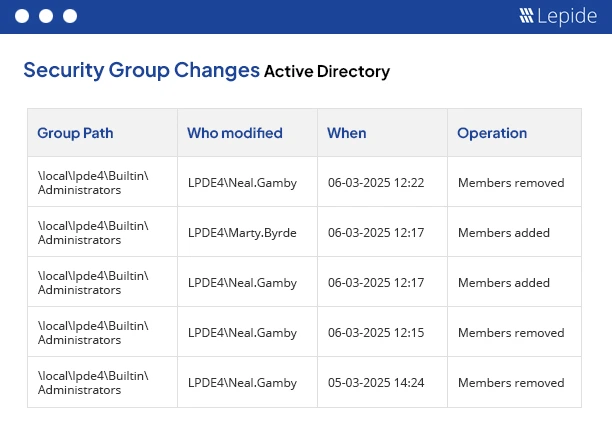According to the IBM Cost of a Data Breach 2024 report,the cost of global data breaches increased to an average of over $4.8 million per incident, with stolen credentials being the major contributor to the share of losses. Enterprises are under a great deal of regulatory and security pressure, and manual access management and static policies are no longer enough.
Identity and Access Management (IAM) is an automated, timely control method that helps maintain the management of digital identities in a safe, auditable, and compliant manner. When integrated into a bigger compliance strategy, IAM transforms governance from a box-ticking process into a proactive risk management approach.
Why Compliance and IAM go Hand in Hand
Identity governance and compliance are closely related since any regulatory framework necessitates restricting access to private information and systems. In addition to requiring security measures, standards such as ISO 27001, NIST 800-53, HIPAA, now require enterprises to demonstrate and record who accessed particular data, under what conditions, and with what authorization. Without a solid Identity and Access Management (IAM) system, such a high level of accountability cannot be attained.
Compliance is not static, it evolves with new threats, technologies, and regulations. However, manual reviews, incomplete records, or outdated permissions are frequently used in traditional access operations which can lead to blind spots and non-compliance. By integrating access control policies into daily operations and unifying identity data across cloud , on- premises, and hybrid environments , IAM bridges the gap.
IAM systems perform access provisioning, least privilege enforcement, and continuous retention of entitlement changes which generate the data that populates audit logs, thereby ensuring the regulator’s expectations of a verifiable audit trail during assessments. Consequently, this enables the organizations to demonstrate that the data are not only secured but also accessed in accordance with the policy. In addition, IAM reduces the likelihood and expense of non-compliance through early anomaly identification, preventing insider misuse, and aligning user access with job tasks.
Simply put, trust is the foundation of compliance, and IAM offers the technical and procedural trust mechanism needed to demonstrate operational resilience, regulatory alignment, and ethical access control in a continuously shifting threat scenario.
Compliance Challenges that IAM Solves
The global market for IAM, with a compound annual growth rate (CAGR) of 15.6%, is expected to be twice as large in five years, going from USD 15.7 billion in 2023 to USD 32.6 billion in 2028. Every time an organization’s digital ecosystems get more extensive, they also come across compliance challenges that are difficult to overcome. These problems are solved with the help of Identity and Access Management (IAM), which, among other things, automates controls, enhances visibility, and enforces access regulations uniformly.
- Privilege Misuse and Over-provisioning: One of the major compliance issues is the overuse or continuous granting of user privileges. Insufficient and excessive access permissions may become a source of insider threats and cause compliance violations. IAM mitigates this possibility and guarantees that permission always matches policy requirements by imposing the least privilege method and automatically changing the access when user roles are changed.
- Limited Visibility: Without an integrated identity layer, tracking user behavior and access changes becomes a very difficult compliance challenge. With continuous monitoring and comprehensive reporting, security teams are able to detect in time suspicious changes or unauthorized access and be prepared for an audit.
- Inefficient Access Reviews: Periodic access examinations are necessary for compliance, however, manual audits are slow, error-prone, and difficult to maintain at a large scale. IAM operates in real-time and thus is able to completely automate the certification process while also sending management prompts for reviewing or denying access. Hence, the audits become more efficient and reliable compliance checks are ensured.
- Identify Sprawl: When organizations move to cloud and hybrid infrastructures, the need for identities arises in various platforms such as Active Directory, Azure AD, SaaS applications, and on-premises systems. IAM centralizes identity management which means consolidating accounts and removing duplicates. The unified method helps to stay compliant in the ever-growing IT environment.
IAM, by automating identity governance, is a game changer for compliance. It moves the entire process from being reactive to sustainable. The solution achieves this by integrating routine operational workflows with policy enforcement, reducing human errors, and providing continuous control. Because of IAM, enterprises are empowered to observe the right compliance, have more time, and create a trustworthy platform for their safe corporate expansion.
How Identity and Access Management Strengthens Compliance
Identity and Access Management frameworks are in line with regulatory requirements as they entail compliance controls being directly inserted into access management workflows. Some of the key features are:
- Automated Identity Lifecycle Management: This feature guarantees that access rights are given and removed in a timely manner, thereby the threat of stale accounts is kept to a minimum.
- Role-Based Access Control (RBAC): Identity and Access Management makes compliance easier by defining the access given based on the roles, which in turn, lessens both the complexity and mistakes of the human factor.
- Centralized Automation and Policy Enforcement: Identity and Access Management delivers a single point of control over security measures for both cloud and on-premises systems, thus ensuring security policy adherence enforcement is uniform.
- Comprehensive Audit Trails: A very important feature of Identity and Access Management to strengthen compliance is it keeps a detailed record of user activities and changes in access rights, thus providing a source that can be consulted during compliance checks.
- Bifurcation of Duties: Identity and Access Management avoids conflicts of interests by making sure that no one person has an excessive number of overlapping privileges which helps in strengthening compliance.
Business Benefits Beyond Compliance
Even though regulatory compliance represents the main reason for Identity and Access Management adoption, its strategic value exceeds the mere satisfaction of regulatory requirements. An effective Identity and Access Management program becomes a direct contributor the business by:
- Enhancing Business Efficiency: The IT team’s working hours and user onboarding time are significantly reduced by automation of provisioning and self-service access, which frees up IT employees to work on other strategic projects.
- Improves User Experience: By removing the need to remember numerous passwords and cutting down on the amount of time spent on login attempts, single sign-on enables a unified login experience where the user receives access without compromising security.
- Digital Innovation: A trustworthy Identity and Access Management base is the prerequisite for cloud innovations, AI implementations, and the remote workforce set-up thus supporting overall innovation.
- Build Customer Trust: Open identity processes signal the customers that the company is reliable and has the data under control, thus strengthening its brand trustworthiness.
Emerging Trends Enhancing Identity and Access Management Compliance
Innovation in Identity and Access Management is an ongoing process. It is anticipated that the upcoming generation of IAM technicians will include:
- AI-Enabled Identity and Access Management: AI handles the analysis of the access pattern to find any deviations, reduce the number of resources that receive false alerts, and ultimately discover internal threats at an early stage. detects abnormalities in real-time user behavior to automate danger identification and aid in risk prediction. Tasks like user provisioning and de-provisioning are also accelerated.
- Zero Trust Model: This model uses a “never trust, always verify” strategy, which is essential for compliance in contemporary hybrid environments. It continuously authenticates users and devices regardless of their location.
- Decentralized Identity Management: The proposition of decentralizing the digital identity system provides users full rights and control over their identities, blockchain-based identity systems offer unmatched privacy and easy regulation.
- Identity Governance and Administration (IGA): Incorporates compliance analytics to generate instant access review insights and policy violation reports.
- Cloud-native IAM: Cloud-native Identity and Access Management solutions, which provide improved integration, scalability, and management across hybrid settings, are becoming the norm as businesses migrate to the cloud. It makes it possible to apply dependable access control procedures in SaaS and multi-cloud settings.
Such innovations are redefining Identity and Access Management not as a mechanism of compliance but rather as an intelligent governance that prepares businesses for the future.
Conclusion
As per global regulatory mandates like GDPR, HIPAA, and PCI DSS, organizations must protect sensitive and personal data, ensure data integrity, and permit access tracing. The significance of Identity and Access Management is beyond the whole measure. Quite essentially, it has evolved from being merely a security tool to a comprehensive strategy that promotes business effectiveness, guarantees regulatory compliance, and raises the user experience level.
The implementation of Identity and Access Management infrastructures turns companies into entities capable of handling identity and access management on a live basis, thus lessening the possibility of risks and avoiding cyber incidents..
How Does Lepide Help?
Lepide is a unified solution that enterprises can efficiently use to connect the dots between compliance and Identity and Access Management requirements. Lepide allows the companies to make their identity and access management and compliance more robust by giving them a single platform that provides real-time user activity monitoring for early security threat detection. The tool automates and accelerates permission management allowing enterprises to spot and remove the excessive access rights quickly which is in line with zero trust security models.
Lepide further facilitates compliance reporting by offering pre-built templates that are in line with regulations like GDPR, HIPAA, and PCI DSS thus making the audit process quicker and less laborious. The platform provides a comprehensive view of both on-premises and cloud systems by integrating seamlessly with systems like Active Directory and cloud environments.
Ready to strengthen your organization’s compliance and security posture? Get a free trial or schedule a demo today and take the first step towards a safer, more compliant future.

